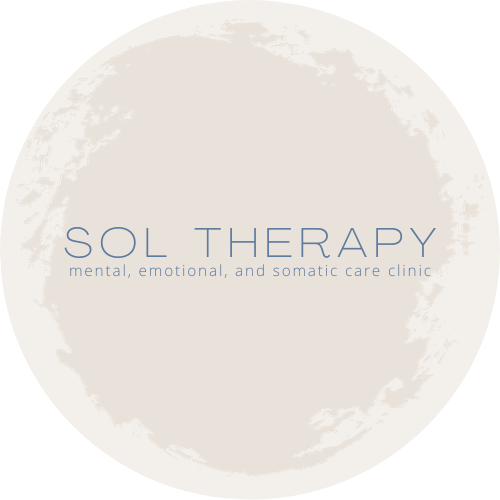Chronic Fatigue Syndrome and Fibromyalgia: Effective Treatments in Singapore

Chronic Fatigue Syndrome & Fibromyalgia in Singapore: A Trauma-Sensitive Approach to Healing
Chronic Fatigue Syndrome (CFS) and fibromyalgia are complex, life-altering conditions that go far beyond mere tiredness or aches. For those living with these conditions, each day can feel like walking through quicksand—profound exhaustion, widespread physical pain, cognitive fog, and a nervous system on constant alert. The toll it takes is not only physical, but emotional, relational, and deeply personal. And when medical investigations reveal no clear cause, individuals are often left feeling dismissed, misdiagnosed, or misunderstood.
But there is another lens—one that honours the full human experience. A lens that recognises the body as wise and protective, not broken. This is where trauma-informed care, neuroscience, and nervous system regulation begin to offer language, meaning, and hope.
What is Chronic Fatigue Syndrome (CFS)?
Chronic Fatigue Syndrome, also known as Myalgic Encephalomyelitis (ME/CFS), is a complex, long-term condition marked by extreme exhaustion that doesn’t improve with rest. But this isn’t ordinary tiredness—it’s a deep, unrelenting fatigue that can feel like your body has run out of battery, even after a full night’s sleep. For many, even basic tasks like showering, preparing a meal, or walking across a room can feel overwhelming.
CFS is often accompanied by a cluster of other symptoms, including cognitive difficulties (commonly referred to as “brain fog”), muscle or joint pain, dizziness, unrefreshing sleep, and post-exertional malaise (PEM)—a worsening of symptoms after even minimal physical or mental effort. Many individuals also experience sensory overload, where bright lights, loud sounds, strong smells, or even crowded spaces can feel unbearable. This isn’t imagined—it’s a reflection of a nervous system that has become overstimulated and struggles to regulate input.
Because symptoms fluctuate and are often invisible to others, people with CFS are frequently misunderstood or dismissed. They may be told to “push through it,” which adds emotional strain to an already exhausting experience. But the reality is: CFS is deeply debilitating and can affect nearly every aspect of daily life. Living with it is not about lacking motivation or willpower—it’s about navigating life with a body and nervous system that are profoundly depleted and reactive. And that deserves recognition, compassion, and the right kind of support.
What is Fibromyalgia?
Fibromyalgia is a chronic condition that affects the body’s pain processing system, often leaving individuals in a state of persistent discomfort. It’s characterised by widespread musculoskeletal pain, deep fatigue, sleep disturbances, and cognitive difficulties—often called “fibro fog.” But it’s not just the pain—it’s the everywhere-ness of it. It can feel as if your whole body is aching, burning, or sore for no clear reason. Some days, even the touch of clothing or a breeze on the skin can be too much.
People with fibromyalgia may also experience heightened sensitivity to sound, light, temperature, and stress similarly to those living with CFS. There may be digestive issues, mood fluctuations, and trouble concentrating or remembering simple things. Like CFS, fibromyalgia symptoms are often invisible to others, which can lead to invalidation or misconceptions—such as being told it’s “all in your head” or that you “don’t look sick.”
Unlike CFS, where fatigue is usually the most dominant and distressing symptom, fibromyalgia tends to centre around widespread pain and hypersensitivity. Still, both conditions share a common thread: a nervous system that has become overactivated, overwhelmed, and deeply fatigued. Living with fibromyalgia isn’t about having a low pain threshold—it’s about carrying a load that others can’t always see. And for those who live with it, each day takes immense strength, adaptability, and grace.
The Overlap Between Chronic Fatigue Syndrome and Fibromyalgia
Chronic Fatigue Syndrome (CFS) and fibromyalgia often share a web of overlapping symptoms—deep exhaustion, unrefreshing sleep, cognitive difficulties (“brain fog”), and heightened sensitivity to sensory input. Both conditions are rooted in nervous system dysregulation and can be misunderstood or misdiagnosed, especially in their early stages. The key difference often lies in the predominant symptom: for those with CFS, fatigue is usually the central and most debilitating feature, while for those with fibromyalgia, chronic widespread pain tends to take the lead. Still, many individuals experience both pain and fatigue in varying degrees, and some may carry dual diagnoses. Understanding this overlap is crucial, not to label or pathologise, but to help each person feel seen in the complexity of their experience.
When There’s “No Medical Cause”: Understanding the Body’s Deeper Story
For many, CFS or fibromyalgia appears after a significant tipping point—an illness, a surgery, prolonged stress, or unresolved trauma. When all the medical scans come back clear, it’s not that the pain is imagined. It’s that the story lives in the nervous system.
According to Polyvagal Theory, our autonomic nervous system responds to threat in deeply patterned ways: fight, flight, freeze, or collapse. In people with chronic fatigue or pain syndromes, the system may be stuck in a chronic stress loop—hypervigilant or shut down—well beyond the original stressor. This dysregulation affects digestion, immunity, energy levels, sleep, mood, and pain perception.
When the body no longer feels safe, even without conscious awareness, it narrows its Window of Tolerance—the optimal zone where we can function and feel without overwhelm or shutdown. Outside of this window, life can feel like too much, too fast, or too flat. Over time, the vagus nerve—the key communicator between the brain and body—can become dysregulated, keeping the body in states of collapse, fatigue, or pain.
Healing Through Integration: A Bottom-Up and Top-Down Approach
While traditional treatments often focus on symptom management, trauma-sensitive and informed care invites a more holistic, integrative pathway to healing—one that includes both bottom-up (body-based) and top-down (cognitive) approaches.
Bottom-Up Support
Nervous system regulation is foundational. This may involve:
- Relational Somatic Therapy: gently tuning in to the body’s felt sense in a safe, paced way.
- Breathwork and grounding practices: to support vagal tone and safety.
- Body-based approach: such as Biodynamic Craniosacral Therapy (BCST), which gently supports the body’s natural rhythms and innate capacity for healing by working with subtle movements and the nervous system, often fostering deep stillness, regulation, and repair.
- Restorative movement: such as gentle stretching, mindful walking, or shaking practices to restore flow without overwhelming the system.
Top-Down Support
Cognitive tools help rebuild a sense of agency and rewire limiting patterns:
- Psychotherapy: to make meaning of one’s journey, develop emotional resilience, and work through unhelpful thought patterns.
- Clinical Hypnotherapy: to access subconscious belief systems and promote deep inner safety by re-narrating the mind’s beliefs.
- Neuroplasticity-based brain-retraining programs: like Sol Therapy’s Neuro-alignment Programme, which supports rewiring of neural and stress pathways using imagery, self-directed techniques, and integrative cognitive and somatic practice.
When used together, these approaches help expand the window of tolerance, restore connection with the body, and rebuild trust in one’s capacity to heal.
There Is No One-Size-Fits-All Pathway—And That’s Okay
Healing isn’t linear, and there’s no single “correct” approach. What matters most is what feels right for you—right now. Some seasons may call for stillness and deep regulation; others may require more structured support to help you function through a flare. Certain therapies can serve as anchor points over time, nurturing long-term healing, while others may offer timely relief when symptoms feel relentless. At Sol Therapy, we invite exploration, fluidity, and self-trust. As your mind and body shift, so too may your needs. It’s okay to revisit, to pause, to pivot. The healing journey is deeply personal, and our role is to support you in finding what’s most compassionate and sustainable for your system in each chapter.
Navigating Chronic Illness with Compassion
CFS and fibromyalgia are not “all in your head”—they live in your nervous system, shaped by your lived experience, your environment, and the biology of stress.
Healing isn’t about fixing. It’s about gently teaching the body that it is safe again, and supporting the mind in building new patterns of safety, belief, and trust. It means co-regulating in therapy, tuning in to internal cues, and unlearning old protective responses—both in the body and in the stories we tell ourselves.
The mind and body are in constant communication—each shaping and informing the other. When we’ve lived through prolonged stress, illness, or trauma, both systems can become locked in patterns of protection: the mind may expect danger, and the body may brace for it. Healing asks us to tend to both. It means retraining the brain to form new neural pathways that quiet the internal alarm system and make space for new beliefs—ones rooted in hope, capacity, and choice. At the same time, it means teaching the body how to feel safe again, to slowly expand its capacity for rest, regulation, and connection. Neither can be rushed. But when we support the mind and body together, healing becomes not just possible—but sustainable.
This isn’t quick work. But it is possible.
Finding Support for Chronic Fatigue Syndrome and Fibromyalgia in Singapore
At Sol Therapy, we understand that the journey with chronic fatigue and fibromyalgia is deeply personal. That’s why our work goes beyond surface-level symptom relief. We honour the body’s intelligence, the mind’s intelligence, and the spirit’s quiet longing to feel whole again.
Our integrative team of therapists offers a range of trauma-sensitive and trauma-informed, evidence-based, and body-aware therapies designed to support chronic stress, pain, and fatigue recovery. Whether you’re just beginning or have been walking this path for years, you don’t have to do it alone.
Reach out to Sol Therapy to explore how we can support your healing journey in ways that are compassionate, personalised, and rooted in nervous system understanding.
